A local jam session picker, who is a discerning estate sale browser, brought an antique 5-stringer to the BRC workshop recently for some minor work. The instrument proved to be an A.A. Farland circa 1915 “Black Beauty” banjo. Alfred A. Farland (1859-1954 ) was an innovative banjo designer and skillful musician who performed a classical repertoire to much acclaim. He was a teacher and a musically progressive thinker. Although his name on the peg head mother of pearl inlay had nearly worn away, his signature appears throughout the features of this instrument that was manufactured by Rettberg and Lange.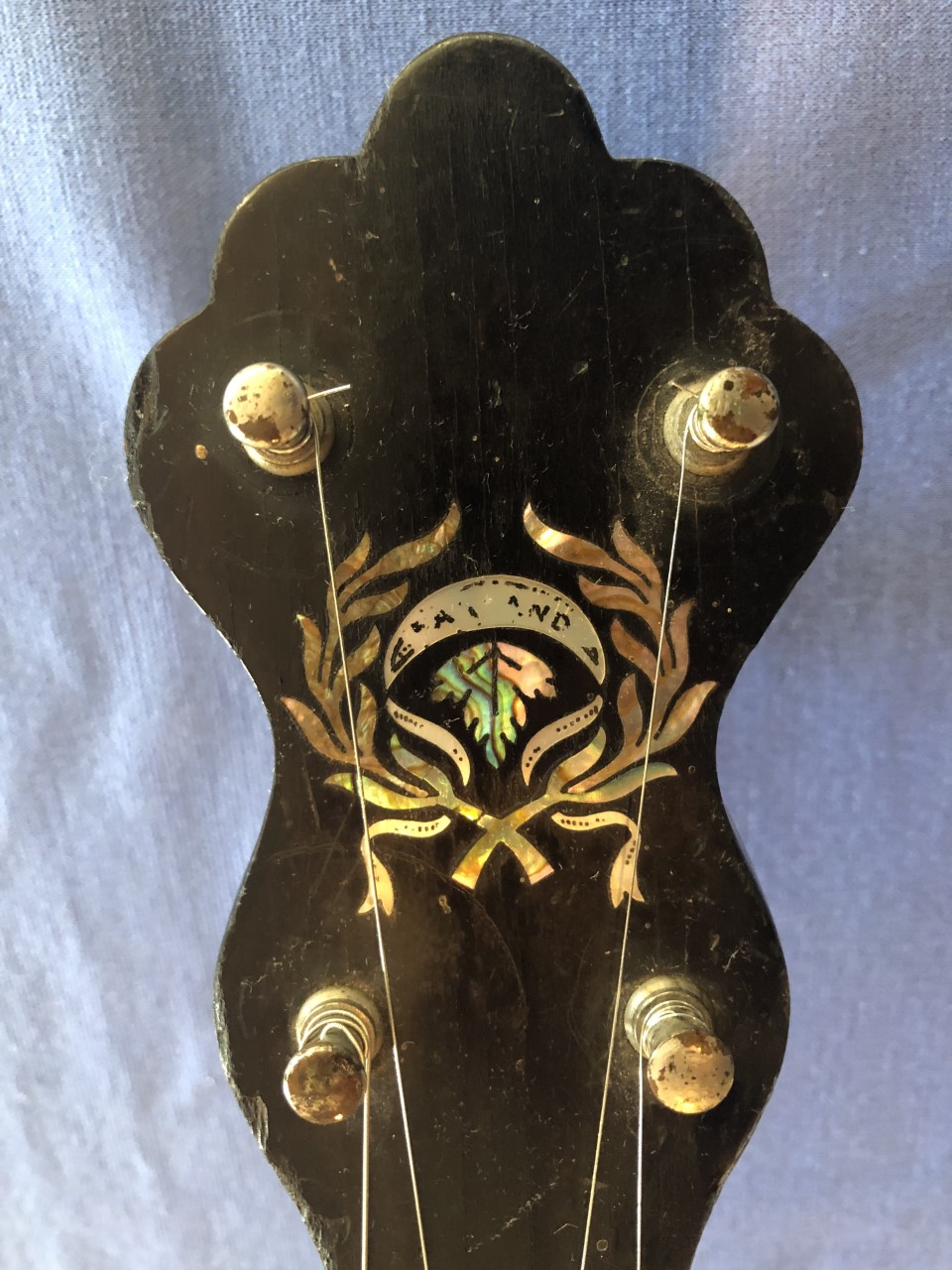
The dowel stick (below) in this open back 5-string antique bears the name of the model, the price tag, signature of the designer, and location of the manufacturer.
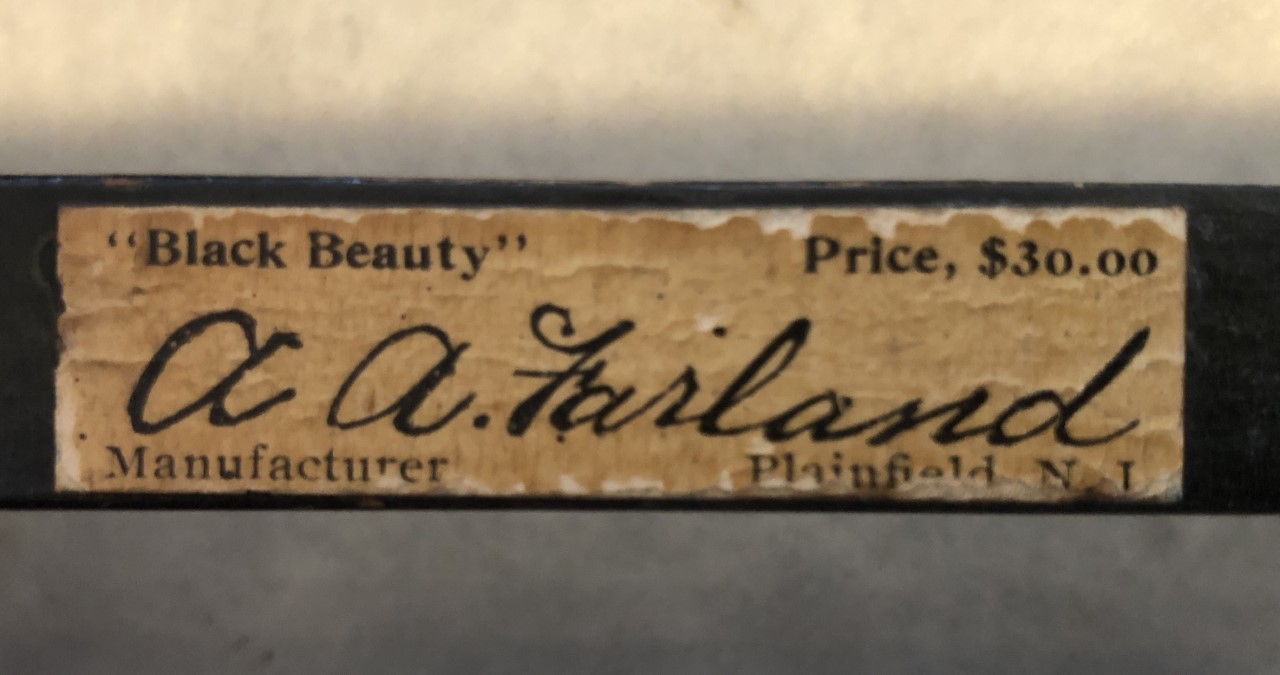
The interior of the pot offers a photo image of Farland and his explicit guarantee that no metal tone ring is present in the architecture of his endorsed instrument. He firmly preferred and advocated a woody banjo tone.
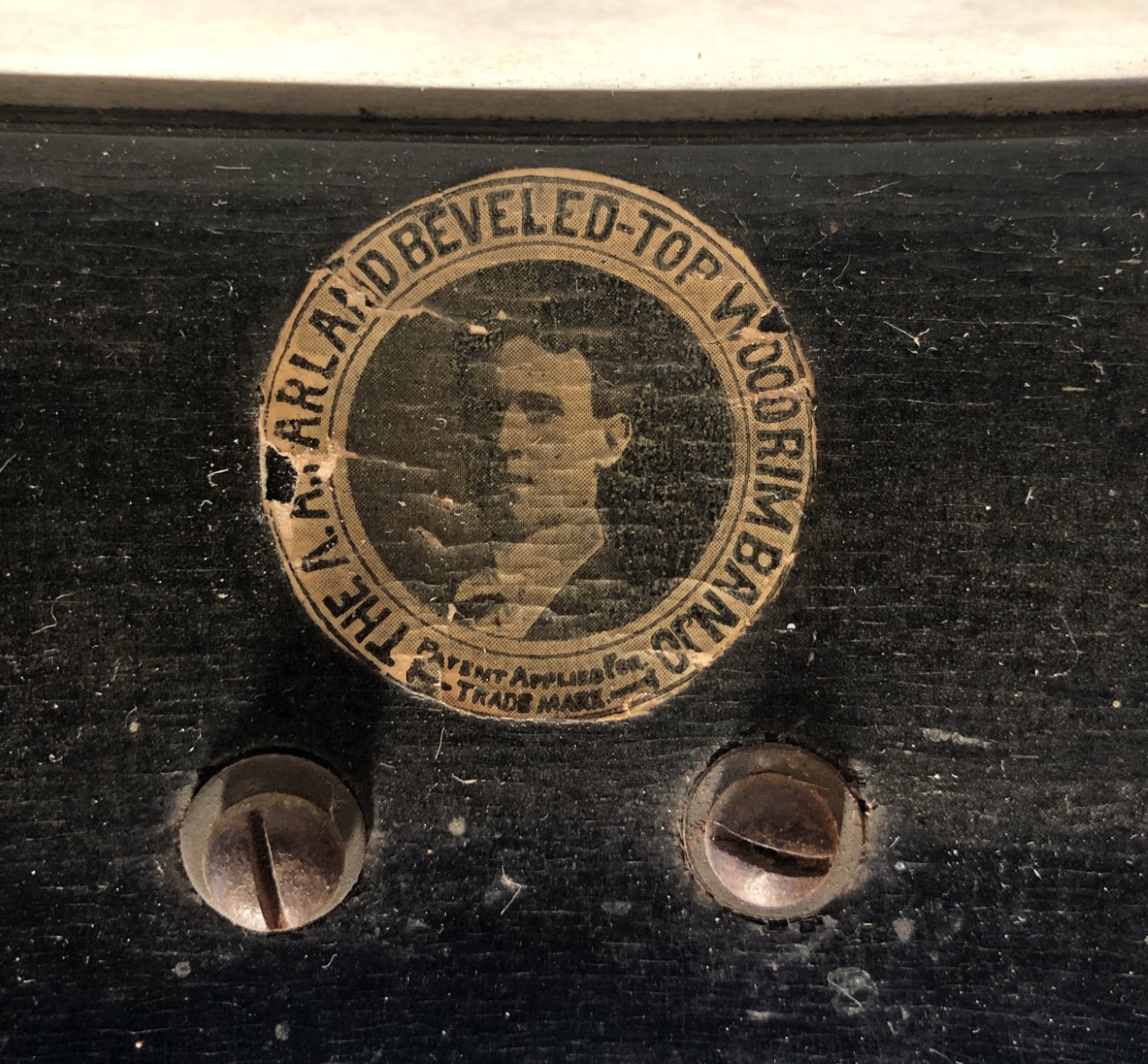
The tailpiece is embossed with the initials of Alfred A. Farland surmounting an undated and abbreviated patent (pending) stamp.
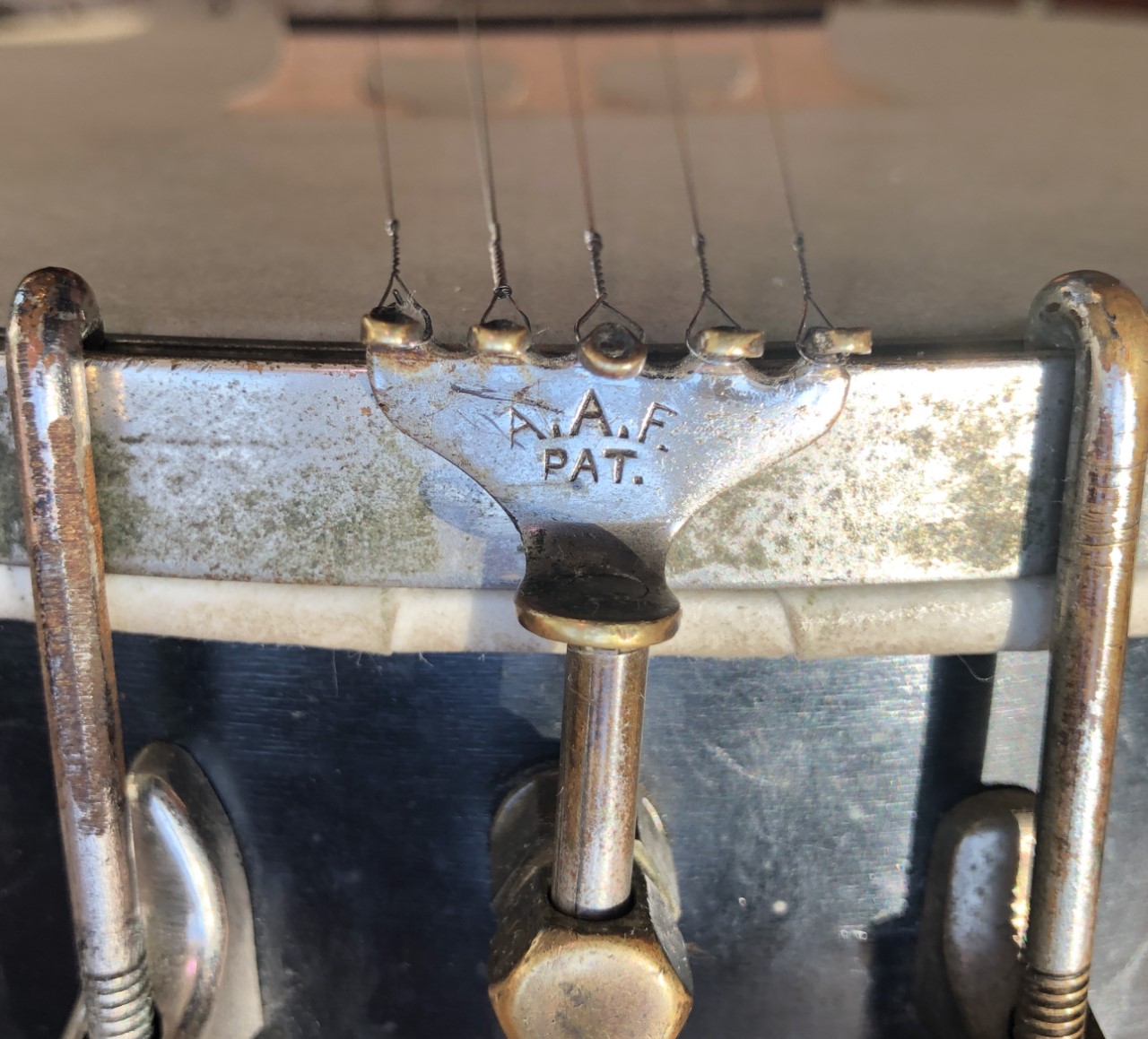
Farland cleverly devised an internal cable-pulley system, so he could mute his banjo in mid performance. This device was operated by a thumb lever inside the rim which is absent in the below photo. The mute pad located below the bridge area of the head is also missing, but its supporting metal pedestal is still present. A black thread traces the course of the cable. For more details on this unique muting system, please Google “disassembled AA Farland mute” for a posting on the Classic-Banjo.com website to observe the integral parts this curious Rube Goldberg apparatus.
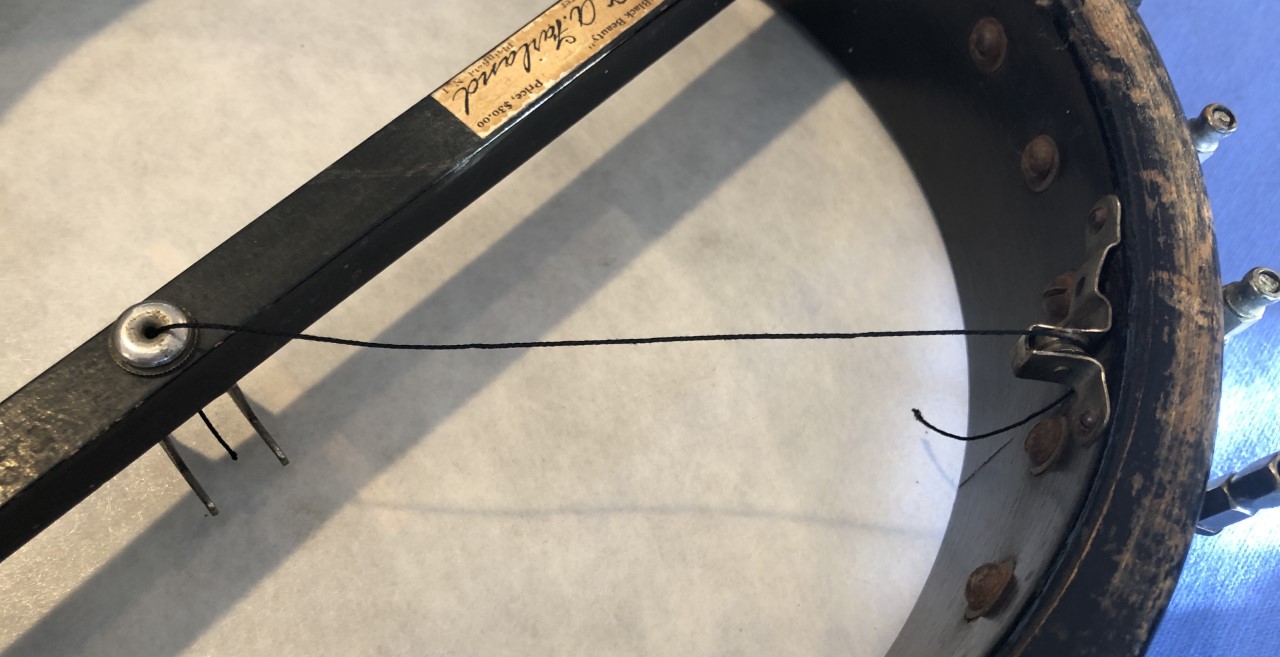
Farland was a very successful performer and wore a tuxedo when on stage. Visit YouTube to listen to ancient recordings of “A.A. Farland plays the Carnival of Venice” which reflect his virtuosity. One of the archival sound files is very scratchy but clearly demonstrates his skills. The other audio clip has better quality but was evidently recorded later in his career when age and hand problems affected his digital dexterity. He was renowned for his proficiency with tremolo phrasings.
From the BRC: Enjoy

No Comments